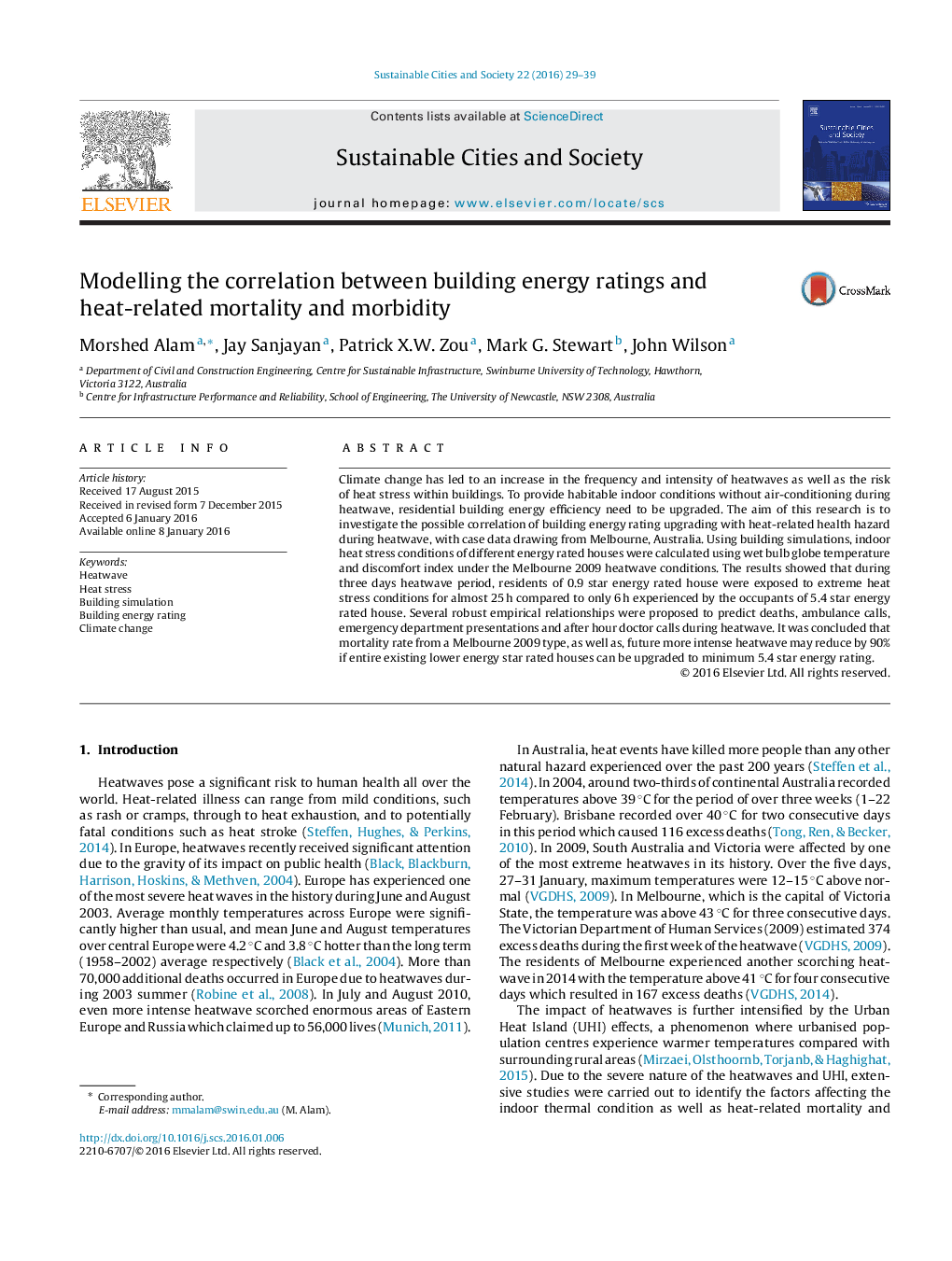| Article ID | Journal | Published Year | Pages | File Type |
|---|---|---|---|---|
| 308061 | Sustainable Cities and Society | 2016 | 11 Pages |
Climate change has led to an increase in the frequency and intensity of heatwaves as well as the risk of heat stress within buildings. To provide habitable indoor conditions without air-conditioning during heatwave, residential building energy efficiency need to be upgraded. The aim of this research is to investigate the possible correlation of building energy rating upgrading with heat-related health hazard during heatwave, with case data drawing from Melbourne, Australia. Using building simulations, indoor heat stress conditions of different energy rated houses were calculated using wet bulb globe temperature and discomfort index under the Melbourne 2009 heatwave conditions. The results showed that during three days heatwave period, residents of 0.9 star energy rated house were exposed to extreme heat stress conditions for almost 25 h compared to only 6 h experienced by the occupants of 5.4 star energy rated house. Several robust empirical relationships were proposed to predict deaths, ambulance calls, emergency department presentations and after hour doctor calls during heatwave. It was concluded that mortality rate from a Melbourne 2009 type, as well as, future more intense heatwave may reduce by 90% if entire existing lower energy star rated houses can be upgraded to minimum 5.4 star energy rating.
